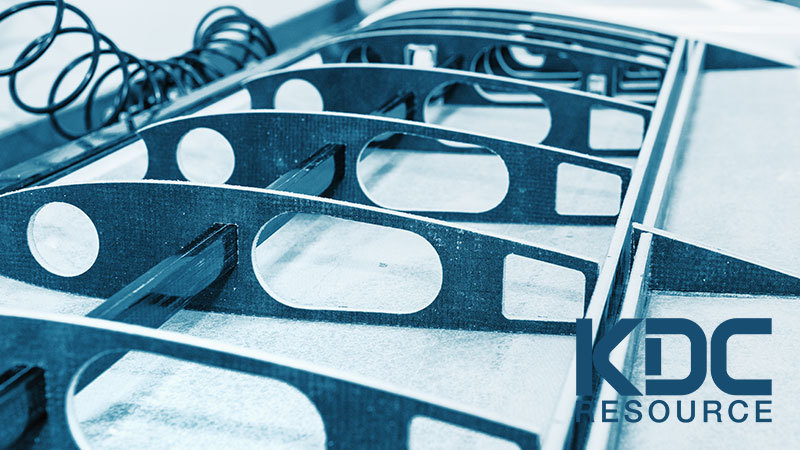

Materials used in aircraft construction have always relied on finding the balance between strength and weight. In the past, we were limited available materials, namely steel and aluminium, but recent years have seen a surge in new materials with much better performance.
What are these materials, and how will they impact the future of aerospace?
Aluminium saw use in aerospace before the invention of planes. It was used to build the fuselage of large airships and still constitutes up to 80% of current aircraft materials. It is a useful material for aircraft construction because it is lightweight yet strong and has good thermal and electrical conductivity.
Steel is preferable for specific areas such as landing gear due to its higher strength. However, due to its greater weight, aircraft manufacturers use steel sparingly. Finally, titanium alloys are used due to their high strength and temperature and corrosion resistance. While this is not an exhaustive list of materials used in aerospace construction, it highlights the most common.
As we move towards more efficient aircraft engines, construction materials must keep pace. Composites made from a base material and resin are already common in aircraft construction because they benefit from the base strength of resin matrices and the specific characteristics of the base materials. Composite materials improve fuel efficiency and operating costs and are highly adaptable.
Carbon-fibre reinforced polymers offered a significant leap forwards in aircraft efficiency. They allow for significant weight- and fuel-saving advantages over heavier materials. Since the introduction of carbon-fibre reinforced polymers into its 787 range, Boeing claims it has saved 48 billion pounds of fuel since 2011. The 787 Dreamliner is up to 25% more efficient than comparable aircraft due to its reliance on these polymers.
Of course, they also come with some inherent disadvantages. Production of composites can be expensive compared to metal alloy production, and composites are a greater fire risk.
Magnesium alloys have taken off in recent years as a viable alternative to aluminium. They were originally banned due to their high flammability, but recent advances in production technologies have changed this. Newer magnesium alloys are lightweight, high-strength, ductile, and corrosion-resistant, all of which makes them ideal for aircraft production. Importantly, too, they are surprisingly cost-effective to produce.
But moving away from metals, we have a range of products that could potentially change aerospace as we know it. One of the most exciting recent developments is the use of bio-composites. As the name implies, these materials rely on a resin matrix that is combined with organic materials from various sources. These are lightweight, cost-effective and durable. But, most importantly, they are recyclable.
Both the base material and resin can be organic. Bio-resins typically come from oil, biomass, or bio-waste. Similarly, the organic fibres used as base materials can include sugar cane, algae, basalt, or bamboo. The benefit of developing these technologies is obvious: they come from renewable sources, many rely on waste products, and they are either recyclable or biodegradable. Importantly, manufacturers can adapt them to various applications with a range of properties.
F/LIST are one such company investing in the future of sustainable aircraft materials. It produces organic composites designed to replace specific parts within aircraft. Its products include sheets made from flax fibre and bio-polymers and sustainable alternatives for aircraft interiors.
We have already seen the introduction of various other products, such as nano adaptive hybrid fabrics (fuzzy fibres) and fibre metal laminates. The benefit of the former is that it can be produced in sheets to desired sizes and serves multiple roles in an aircraft. It will be particularly useful for UAVs due to its lighter weight and structural integrity.
Similarly, fibre metal laminates help to reduce production costs because you need fewer materials compared to alloys. Laminates retain all of the positive qualities of alloys and are lower in weight, too.
As the aerospace industry shifts towards sustainable fuel options, it is only reasonable that production methods adjust accordingly. Many of the alloys currently in use are expensive and complicated to produce. And, although much of an aircraft is currently recyclable, this does not happen in the most efficient way.
Instead, shifting towards organic composites offers a suitable alternative. These materials are sustainable, are waste products, and can be recycled much more efficiently. While we are not yet at the stage of commercial rollout, recent developments certainly suggest we are not far off.